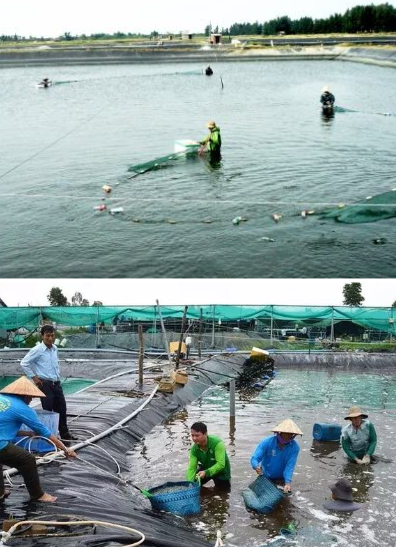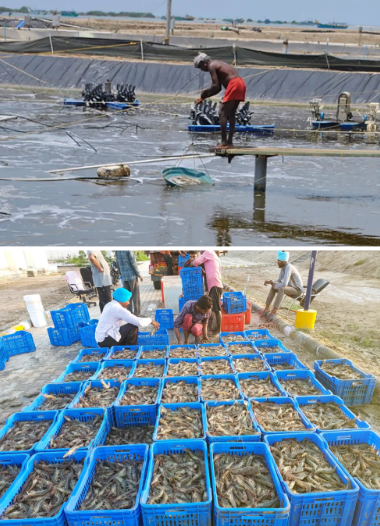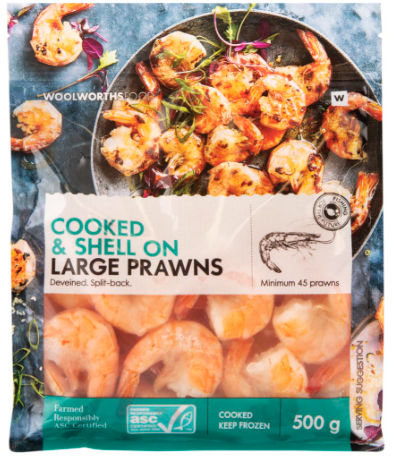|

Entering 2024, when difficulties show no signs of abating, it is necessary to quickly identify the entire shrimp industry landscape to have strategies
The shrimp war (Lesson 1): The race between countries' shrimp
 VIET NAM
VIET NAM
Tuesday, November 14, 2023, 07:00 (GMT + 9)
At this time, economic sectors are full of difficulties and uncertainties that suddenly jump in and get in the way. In that pessimism there is also an optimistic point, mentioned as a bit of self-comfort, in misfortune there will be luck, after the rain the sky will be bright. Although Covid causes many hardships; Even though regional wars cause inflation, recession... still do not falter the shrimp calculations of some shrimp powers, shown through shrimp industry growth plans with impressive numbers. Entering 2024, when difficulties show no signs of abating, it is necessary to quickly identify the entire shrimp industry landscape to have strategies for each business to minimize risks. This article is nothing new, just a summary of the situation and personal perspective for reference.
 First is the Ecuadorian shrimp industry. In 2021, they will reach the dream number, one million tons of shrimp with a growth rate 3-4 times higher than the world average. In 2022 and 2023, their shrimp production will still grow in a difficult global context. They only have a farming area according to information of about 220,000 hectares; They announce a sparse farming process that limits pollution and is limited to the environmental load. They announced to strive for the target of 1.5 million tons of shrimp in the near future. First is the Ecuadorian shrimp industry. In 2021, they will reach the dream number, one million tons of shrimp with a growth rate 3-4 times higher than the world average. In 2022 and 2023, their shrimp production will still grow in a difficult global context. They only have a farming area according to information of about 220,000 hectares; They announce a sparse farming process that limits pollution and is limited to the environmental load. They announced to strive for the target of 1.5 million tons of shrimp in the near future.
The solution is not clear. If farming density is increased, the water surface area for farming will be reduced because land is reserved for waste treatment areas; If we increase the farming area, how likely is it to reach the above number? At least we have to add at least 20% more farming area. Ecuador has created an impressive image of their shrimp, ASC shrimp is environmentally friendly. Perhaps their path will not be able to increase stocking density on a large scale, but will maintain the image of shrimp they have worked so hard to form. However, facing the massive increase in output will be an imbalance between supply and demand, and consumer prices will drop sharply. The efficiency problem has clearly appeared in 2023, according to information that at least 10% of their farming households have suspended their farms due to losses. The direction of increasing world supply output is probably not the most effective direction today.
 China has a huge number of domestic consumers, an increasingly high standard of living, and an increasing demand for high-end food, shrimp among them. More than ten years ago, the shrimp industry here reached a world record that has not been broken yet, of over 1.5 million tons of shrimp a year. Due to overheating of the farming area, widespread pollution and diseases have prevented the shrimp farming industry here from maintaining its peak for a long time. In 2023, China may set another hard-to-break record by importing about one million tons of shrimp, focusing on three sources from Ecuador, India, and Argentina (sea shrimp). China has a huge number of domestic consumers, an increasingly high standard of living, and an increasing demand for high-end food, shrimp among them. More than ten years ago, the shrimp industry here reached a world record that has not been broken yet, of over 1.5 million tons of shrimp a year. Due to overheating of the farming area, widespread pollution and diseases have prevented the shrimp farming industry here from maintaining its peak for a long time. In 2023, China may set another hard-to-break record by importing about one million tons of shrimp, focusing on three sources from Ecuador, India, and Argentina (sea shrimp).
As mentioned above, living standards are high and needs are also diverse and increasingly high. Chinese consumers prefer fresh and live shrimp. With demand and supply, the Chinese shrimp farming industry is developing a model of shrimp raised in membrane houses. With this form, the coastal provinces of Central and Northern China (above Fujian), even though it is cold, can also be raised. The scale of the pond is only a few hundred square meters and to limit pollution, they organize circular farming (RAS) and can achieve 3-5 crops annually. All of this will lead to a fairly high price, 5 USD/kg of shrimp that is not very large in size, but very easy to consume because it is close to central areas and fresh shrimp meets consumer tastes. They calculate that this form of farming is very easy to spread, and is expected to produce an output of 400-500 thousand tons in the near future.
 If this farming method is successful, China will create a bright spot for the shrimp industry by producing sustainable GREEN shrimp wherever there is farming water, and can also be a model for other countries to learn. And more successfully, the Chinese shrimp industry has satisfied the needs and tastes of domestic consumers, with delicious and nutritious products but not cheap at all. You get what you pay for, this product definitely focuses on high-end customers. With this taste of Chinese consumers, the Vietnamese shrimp industry will benefit. Chinese customers are buying live shrimp in shrimp ponds and boiling and freezing in the West of our country, where the current farming area is concentrated. Of course, the purchase price of commercial shrimp will be 5, 7 thousand VND per kg higher than normal trading. In return, they only buy shrimp that is boiled to a beautiful red color and tastes good. Ponds with tarpaulin bottoms will meet this requirement. If this farming method is successful, China will create a bright spot for the shrimp industry by producing sustainable GREEN shrimp wherever there is farming water, and can also be a model for other countries to learn. And more successfully, the Chinese shrimp industry has satisfied the needs and tastes of domestic consumers, with delicious and nutritious products but not cheap at all. You get what you pay for, this product definitely focuses on high-end customers. With this taste of Chinese consumers, the Vietnamese shrimp industry will benefit. Chinese customers are buying live shrimp in shrimp ponds and boiling and freezing in the West of our country, where the current farming area is concentrated. Of course, the purchase price of commercial shrimp will be 5, 7 thousand VND per kg higher than normal trading. In return, they only buy shrimp that is boiled to a beautiful red color and tastes good. Ponds with tarpaulin bottoms will meet this requirement.
With this situation, China's shrimp output exceeds one million tons annually. And for them, they are not too dependent on world consumer markets. Also with this situation, the Vietnamese shrimp industry will tend to have better and better consumption growth in China, due to promoting its strengths of farming shrimp all year round, being close to China and especially having large tiger shrimp production. best of the world.
 India has announced shrimp production of about one million tons in 2020. But that is the highest peak. In recent years, the Indian shrimp industry has also suffered from diseases like Vietnamese shrimp. Recently, perhaps because we were busy dealing with the situation of farming and consumption; Haven't seen them announce new ambitions yet. Indian shrimp has low farming costs after Ecuadorian shrimp. Thanks to that, although affected by anti-dumping taxes, Indian shrimp still dominates the US market, some years reaching over 40% of US shrimp imports. Now their market share is being invaded by Ecuadorian shrimp here. However, because their shrimp processing level, although not high, is still above the level of Ecuadorian shrimp, their market share in the United States has only decreased slightly. India is also China's shrimp mine, and it is their second largest market after the United States. India has thousands of shrimp processing factories like China and they are trying to improve the level of processing. However, there is a big gap between expectations and reality here. India has announced shrimp production of about one million tons in 2020. But that is the highest peak. In recent years, the Indian shrimp industry has also suffered from diseases like Vietnamese shrimp. Recently, perhaps because we were busy dealing with the situation of farming and consumption; Haven't seen them announce new ambitions yet. Indian shrimp has low farming costs after Ecuadorian shrimp. Thanks to that, although affected by anti-dumping taxes, Indian shrimp still dominates the US market, some years reaching over 40% of US shrimp imports. Now their market share is being invaded by Ecuadorian shrimp here. However, because their shrimp processing level, although not high, is still above the level of Ecuadorian shrimp, their market share in the United States has only decreased slightly. India is also China's shrimp mine, and it is their second largest market after the United States. India has thousands of shrimp processing factories like China and they are trying to improve the level of processing. However, there is a big gap between expectations and reality here.
 Overview, since 2015, India has achieved the target of one million tons of shrimp. But the synchronization is not clear, the price of their shrimp is low, and they sell low, which is a competitive advantage. But looking back at the current situation of the farming sector, there are still widespread reports of farming households losing money, hanging ponds... and the processing level has not reached the planned level. It is possible that the Indian shrimp industry will have a long time to stop at the current output level to consolidate its strength and build more synchronized industry links as a foundation to conquer the next goals. Overview, since 2015, India has achieved the target of one million tons of shrimp. But the synchronization is not clear, the price of their shrimp is low, and they sell low, which is a competitive advantage. But looking back at the current situation of the farming sector, there are still widespread reports of farming households losing money, hanging ponds... and the processing level has not reached the planned level. It is possible that the Indian shrimp industry will have a long time to stop at the current output level to consolidate its strength and build more synchronized industry links as a foundation to conquer the next goals.
Indonesia's shrimp industry with about 300 thousand hectares of farming and an average output of 1 to 1.5 tons per hectare, is not high, but there is potential to accelerate output in the future. Shrimp industry officials here do not hide their intention to pursue Vietnamese and Indian shrimp output. They have quite a methodical strategy. Such as efforts to bring broodstock farms to Indonesia instead of having to spend tens of thousands of kilometers to periodically bring broodstock from Hawaii or Florida, as Asian countries are doing today. They have a GREEN farming program to promote and build the image of their shrimp. That is, they promote the strengths of the land of thousands of islands, shrimp farming combined with conservation and regeneration of coastal mangrove forests. Clean shrimp combined with forest protection is valuable information that attracts consumers and raises the profile of Indonesian shrimp in the world. At the same time, they also have a domestic stimulus program "eating a shrimp a day".
 Overall, the Indonesian shrimp industry has a quite methodical development strategy and they achieve their goal of following the Vietnamese and Indian shrimp industries. But output targets do not seem easy to implement, it is better to focus on pursuing sustainable growth goals. Overall, the Indonesian shrimp industry has a quite methodical development strategy and they achieve their goal of following the Vietnamese and Indian shrimp industries. But output targets do not seem easy to implement, it is better to focus on pursuing sustainable growth goals.
The Thai shrimp industry currently has the lowest output among the six shrimp farming powers. Rural workers tend to move to urban areas, causing their shrimp industry to lack labor in both farming and processing. This factor is quite basic to hold back their shrimp industry, which currently only reaches an output of over 200,000 tons per year, just over 1/3 of its heyday more than a decade ago. Although Thai shrimp holds the 3rd market share in Japan and 5th in the United States, with this trend, the Thai shrimp industry will not set large targets, only focusing on sustainable operations and serving tourists. its rather large calendar, rather than the goal of export development.
.jpg) Viet Shrimp, with its development strategy until 2030 with a vision to 2045, sets a growth target of about 7-8% per year. With world demand and internal capabilities, this indicator is appropriate. In recent years, according to published data, there has been a fairly stable growth in output, although slightly lower than the above target. Although the export turnover target sometimes declines, the growth trend is a solid trend. Currently, although it has reached over 4 billion USD and is on the list of 10 high-turnover export products famous for its deep processing capacity and potential to expand farming area... but the Vietnamese shrimp industry is still in the stage of exporting. The phase is meant to deal with difficulties that continuously arise and become increasingly complex. The biggest difficulty is the low success rate leading to high costs. Next, diseases in farmed shrimp often occur , contributing to a decrease in productivity and shrimp size at harvest. Another difficulty is that the vast majority of farmers lack capital for production... Actually, these difficulties are related and have a mutual impact, contributing to the relative downward force of the activity circle. Viet Shrimp, with its development strategy until 2030 with a vision to 2045, sets a growth target of about 7-8% per year. With world demand and internal capabilities, this indicator is appropriate. In recent years, according to published data, there has been a fairly stable growth in output, although slightly lower than the above target. Although the export turnover target sometimes declines, the growth trend is a solid trend. Currently, although it has reached over 4 billion USD and is on the list of 10 high-turnover export products famous for its deep processing capacity and potential to expand farming area... but the Vietnamese shrimp industry is still in the stage of exporting. The phase is meant to deal with difficulties that continuously arise and become increasingly complex. The biggest difficulty is the low success rate leading to high costs. Next, diseases in farmed shrimp often occur , contributing to a decrease in productivity and shrimp size at harvest. Another difficulty is that the vast majority of farmers lack capital for production... Actually, these difficulties are related and have a mutual impact, contributing to the relative downward force of the activity circle.
In short, the overview of the shrimp industry in terms of supply in the world is a colorful picture. Basically, shrimp farming countries are trying to both increase production (width) and go in-depth in the right direction (green, sustainable development). This cognitive similarity makes competition in the shrimp industry more fierce, with the trend being long-term low prices. What is the solution for the Vietnamese shrimp industry to overcome, improve and be proactive in whole chain operations to maintain sustainability? This challenge is not small and requires time and cooperation from all links in the industry's value chain as well as cooperation from relevant authorities. Competitors are accelerating and time does not wait for us.
 FIS.png)
Author/source: Dr. Ho Quoc Luc - Former Chairman of VASEP, Chairman of the Board of Directors of FIMEX VN / VASEP (translated from original in vietnamese)
[email protected]
www.seafood.media
|
|



